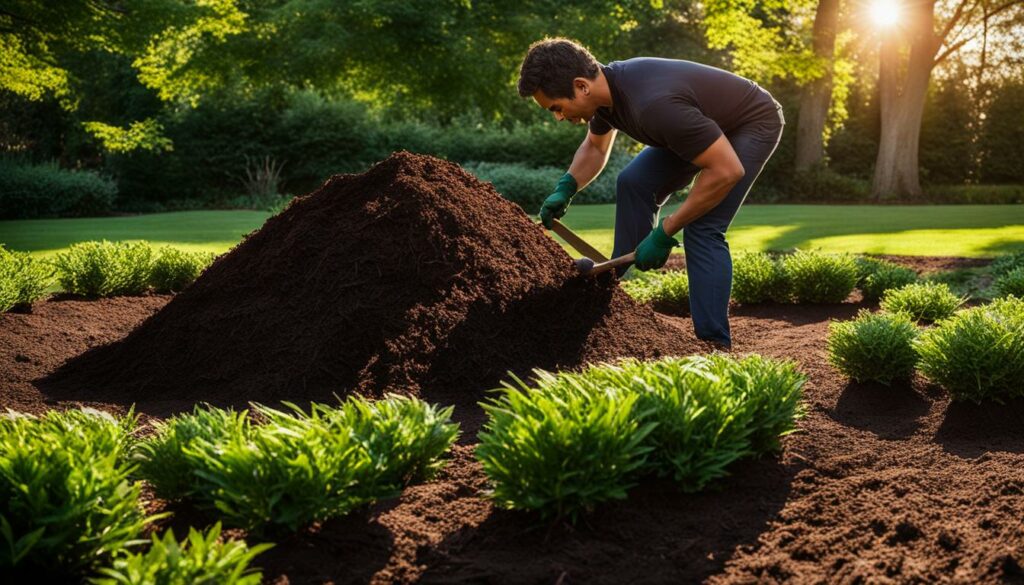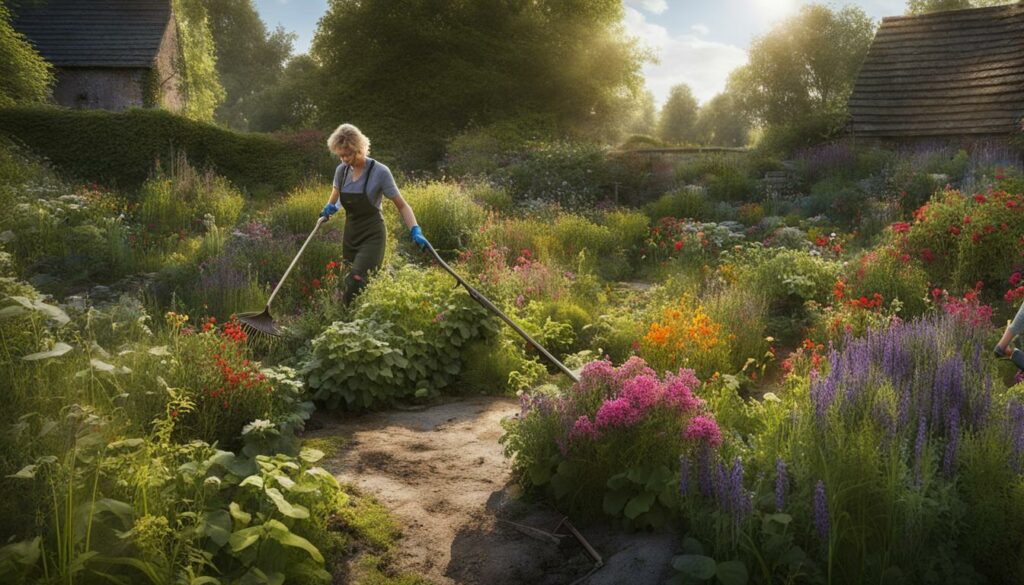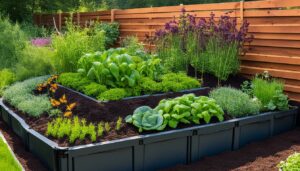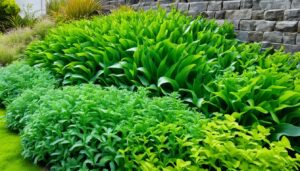It’s the classic tale of nature reclaiming its space, but what if you’re ready to take it back? An overgrown garden seems like a chaotic challenge, but beneath the wild growth lies potential for beauty and order. Are you prepared to embark on the fulfilling journey of reclaiming an overgrown garden, implementing garden renovation strategies to revive your verdant oasis? Transforming an area overrun by untamed plants requires not just effort, but insight into overgrown garden makeovers and restoring neglected gardens. Let’s dive into the green and grow a new perspective together.
Key Takeaways
- Begin the process by assessing the current state of your garden, pinpointing both challenges and opportunities.
- Tackle the chaos methodically, using proper tools to clean up and clear out without disturbing the soil too much.
- Incorporate both short-term clean-up and long-term management strategies to maintain the beauty of your garden.
- Consider environmentally friendly solutions such as solarization to address weed issues without chemicals.
- Restore the garden’s structure through careful pruning and use of lawn care equipment for a polished look.
- Develop a plan that acknowledges the time and dedication required to successfully execute your garden’s makeover.
Embarking on the Overgrown Garden Makeover Journey
Restoring order from chaos begins with assessing the condition of your garden. This essential first step in the garden cleanup involves identifying what elements of your garden are worth preserving and deciding which areas require a complete overhaul. Our guide on reviving neglected gardens offers practical garden restoration ideas to assist you in this transformative mission.
Understanding the Current State of Your Garden
Evaluate the existing plant life, the soil condition, and the overall layout. This analysis not only sheds light on garden restoration ideas but also helps you prioritize the tasks ahead. A clear understanding guides you efficiently through the neglected garden transformation.
Essential Tools for Tackling an Unruly Yard
Having the right tools at your disposal is critical. Here’s a selection of must-have equipment that can significantly aid your journey:
- Puncture-resistant gloves to keep your hands safe
- Sturdy kneelers and seats for comfort during long tasks
- Quality trimming tools such as secateurs and shears
- Hand tools like hori hori knives and CobraHead Weeder for precision work
- Mechanized aids including lawnmowers and electric hedge trimmers for efficiency
Setting Realistic Goals and Timeframes
A structured approach is invaluable. Start with setting a financial budget and timeframes for each phase of garden restoration. Break down the project into manageable tasks and keep track of your progress.
Understanding that garden transformations take time, patience, and dedication is key. Look at it as an ongoing journey rather than a quick fix. Let’s look at the tools you’ll need to begin this exciting venture in detail:
| Tool | Use |
|---|---|
| Puncture-resistant gloves | Protects hands during heavy clearing and pruning |
| Garden kneeler | Provides comfort for knees and back during long hours of work |
| Trimming tools | Essential for shaping bushes and cutting back overgrowth |
| Hori hori knife | Multipurpose tool used for digging, weeding, and planting |
| CobraHead Weeder | Great for precise weeding and cultivating in tight spaces |
| Lawnmower | Keeps your grass at an even, tidy length |
| Electric hedge trimmer | Aids in maintaining well-groomed hedges and edges |
Remember, even the most neglected garden can be revived with the right garden cleanup tips, effort, and a bit of creativity. It’s a commitment to breathing new life into a forgotten space, watching it transform step by step into a place of beauty and tranquility.
Garden Cleanup Tips and Renovating a Neglected Garden
Garden rejuvenation tips often begin with a clear strategy for tackling an overgrown garden makeover. If you’re facing the challenge of renovating a neglected garden, understanding that patience and systematic steps are your allies will be vital in achieving a successful neglected garden transformation.
To guide you through the process, here is a detailed approach:
- Assessment: Review the extent of overgrowth and determine which plants are worth saving.
- Cleaning: Begin by removing debris and cutting back overgrown shrubs and trees to re-establish structure.
- Identify Invaders: Locate and remove invasive species to prevent future issues.
- Solarization: Use black plastic to cover areas with weed infestations, eliminating them through solar heat.
- Mulching: Apply a fresh layer of mulch to suppress weeds, retain moisture, and give your beds a finished appearance.
- Pruning: Rejuvenate existing plants by pruning, which encourages growth and improves plant health.
Among these steps, mulching and pruning stand out as two key activities. The following table provides a comparative view of their benefits:
| Mulching | Pruning |
|---|---|
| Suppresses weed growth | Encourages new growth |
| Retains soil moisture | Removes dead or diseased branches |
| Enriches soil over time | Shapes plants for aesthetic appeal |
Remember that garden rejuvenation tips are not one-size-fits-all; the specifics of your approach will depend on the unique conditions of your garden. With dedication and the appropriate techniques, you’ll see that even the most neglected garden transformation is absolutely attainable. Take these overgrown garden makeover ideas and adapt them to fit your situation, breathing life back into your outdoor space.
Executing the Cleanup: A Strategy for Revival
When reclaiming an overgrown garden, it’s essential to strategize the revival process. This means breaking down the cleanup into manageable steps that prioritize high-impact tasks, leading to the gradual revival and reviving of the neglected garden. The following guide demystifies the strategic approach to garden restoration, ensuring that your garden cleanup tips lead to a flourishing outdoor space.
Eliminating the Weeds: Techniques and Tips
The first step in a garden revival is addressing the most visually intrusive elements—weed infestation. It’s vital to approach this task systematically:
- Prioritize larger weeds which have more significant visual and spatial impact.
- Use a combination of manual pulling and hoeing to remove these challenging invaders.
- Apply organic solutions like vinegar or commercial herbicides if necessary, targeting only the problematic areas to minimize soil disruption.
- Cover bare patches with garden fabric or mulch to curb new growth.
Weed management is a critical component of garden cleanup tips that ensures your hard work has lasting effects.
Pruning and Shaping: Breathing Life into Plants
Correctly executed pruning not only shapes your plants but also propels their health and growth:
- Start by removing dead or diseased branches to conserve the plant’s energy.
- Shape overgrown bushes and hedges to encourage better airflow and sunlight penetration.
- Consider the specific needs of each plant; certain species, such as lilacs and hydrangeas, benefit from seasonal pruning to promote blooming.
Strategic cutting back plays a pivotal role in garden restoration ideas, providing direction and aesthetic appeal to the living elements of the space.
Mulching for Success: Encouraging Healthy Growth
Mulch is an essential ally in the quest for a revived garden, offering both protective and nourishing benefits:
- It serves as a barrier against new weed growth, keeping your cleaning efforts intact.
- Helps regulate soil temperature and moisture levels, promoting a robust garden bed.
- Attracts beneficial insects and organisms that contribute to soil health.
Effective mulch use is among the top garden restoration ideas, and its proper application signals the turning point for bringing your garden back to life.

| Task | Purpose | Benefit |
|---|---|---|
| Weed Elimination | Remove visual clutter and reclaim space | Prevents future overgrowth |
| Pruning and Shaping | Guide plant growth and health | Boosts aesthetics and plant vigor |
| Mulching | Protect and nourish the soil | Promotes healthy plant growth and reduces maintenance |
Each phase in the cleanup process, from eradicating weeds to spreading mulch, contributes to restoring the garden’s vitality, making it less daunting to keep it in shape. By breaking down the tasks, implementing these garden cleanup tips, and infusing the process with expert garden restoration ideas, you’ll soon enjoy the rewards of your labor—a vibrant, healthy, and welcoming outdoor haven.
Nurturing and Sustaining Your Rejuvenated Garden
After diligent efforts in restoring a neglected garden, the key to lasting beauty lies in effective garden renovation strategies to keep it looking pristine. A well-crafted approach not only transforms an overgrown area but ensures that it’s sustainable and easy to manage going forward. This involves garden rejuvenation tips that help in selecting the right plants, caring for perennials, and maintaining a consistent schedule. Let’s delve into methods that will aid in maintaining your garden’s vibrant and healthy state.
Plant Selection: Choosing the Right Greenery
Selecting the right plants is a cornerstone of any successful overgrown garden makeover. Plants that are well-suited to your local climate and soil composition are less prone to disease and require less upkeep. This, in turn, contributes to a garden that remains in balance with its natural surroundings.
Perennial Care: Dividing and Transplanting
Perennial plants are a reliable choice for long-term garden health, but as they grow and multiply, they can become crowded. To avoid this, restoring a neglected garden includes a periodic routine of dividing and transplanting perennials to ensure they have enough space. Dividing them also rejuvenates the plants and helps them to thrive.
Maintenance Schedule: Keeping Your Garden Thriving
Consistency is key when it comes to maintaining your garden’s allure. A garden rejuvenation tip that can’t be overstated is the creation of a maintenance schedule. Regular attention to watering, pruning, and fertilizing will keep your garden healthy and prevent it from returning to an overgrown state.
| Season | Task | Benefit |
|---|---|---|
| Spring | Pruning early bloomers | Encourages healthy growth and flowering |
| Summer | Consistent watering and weeding | Maintains moisture levels, prevents weed overgrowth |
| Fall | Dividing perennials | Promotes plant health, prevents overcrowding |
| Winter | Mulching and protecting plants | Insulates plant roots, prepares for next growing season |
By integrating these practices into your routine, your garden will not only exhibit the charm and organization intended but will do so with an effortless grace that comes from harmonious cultivation. Remember, a lavish garden is a testament to the ceaseless care and attention it receives.

Conclusion
As we reach the end of our journey focused on reclaiming an overgrown garden, it’s important to underscore the vital role of ongoing care in preserving the beauty and health of your newly transformed space. Maintaining a routine of regular maintenance practices ensures that your garden cleanup tips are not fleeting efforts but part of a sustainable strategy. Seasonal mulching, diligent weeding, and attentive pest management are not just chores; they’re the backbone of a thriving garden that reflects your commitment and passion for the land.
By renovating a neglected garden, you invest not just in the land, but also in your personal wellbeing. To prevent a relapse into disarray, it’s crucial to split and manage perennial growth, this both invigorates the plants and keeps their exuberance in check. A garden, after all, is a living, breathing entity that responds to the care you give it. As you apply the neglected garden transformation techniques, it’s rewarding to watch as an unwieldy wilderness becomes a verdant, well-ordered retreat.
In the end, the time and effort expended in reviving your garden result in a serene sanctuary that mirrors the hard work and resilience that gardening embodies. Let the striking contrast of before-and-after images of your work be a reminder of how far you’ve come and an inspiration to continue on this fulfilling path. With sustained effort and a heartfelt connection to the earth, your reclaimed overgrown garden stands as a hallmark of transformation and a testament to the enduring beauty of nature cultivated by human hands.








